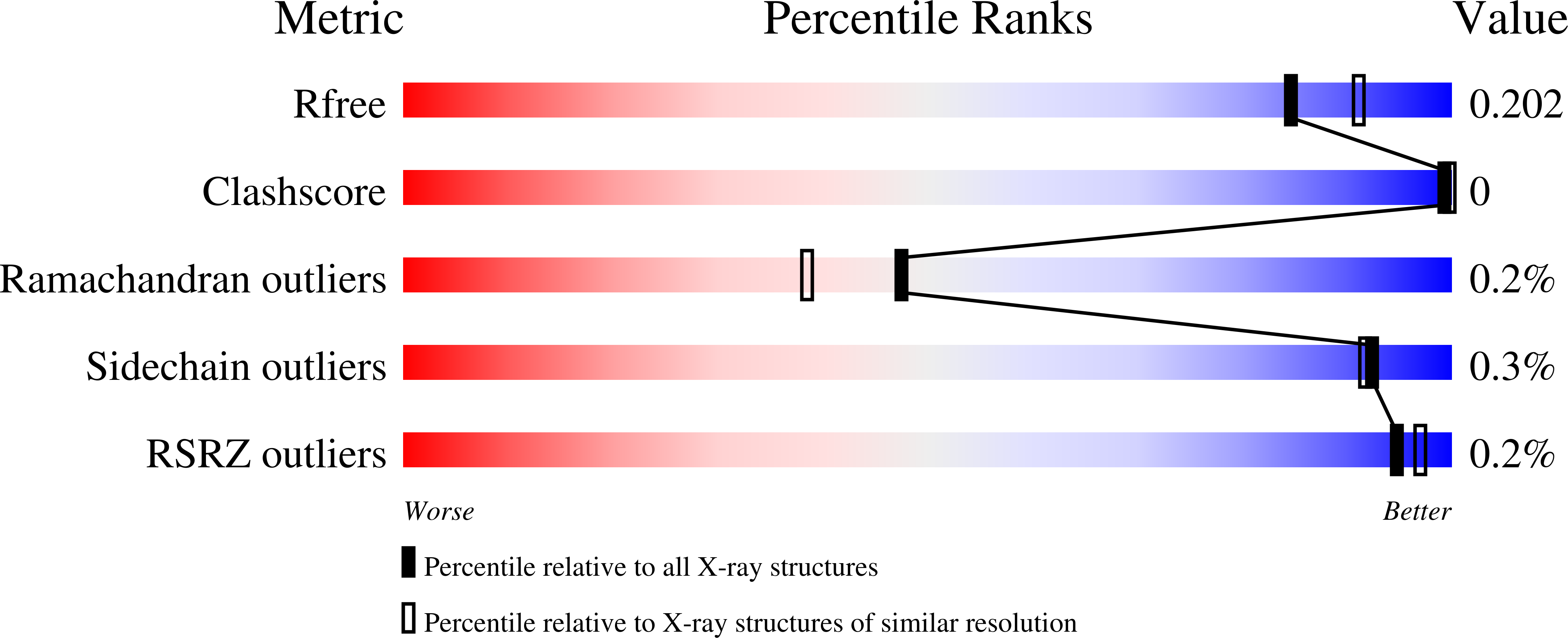Ligand-bound structures and site-directed mutagenesis identify the acceptor and secondary binding sites of Streptomyces coelicolor maltosyltransferase GlgE.
Syson, K., Stevenson, C.E., Miah, F., Barclay, J.E., Tang, M., Gorelik, A., Rashid, A.M., Lawson, D.M., Bornemann, S.(2016) J Biological Chem 291: 21531-21540
- PubMed: 27531751
- DOI: https://doi.org/10.1074/jbc.M116.748160
- Primary Citation of Related Structures:
5CVS, 5LGV, 5LGW - PubMed Abstract:
GlgE is a maltosyltransferase involved in α-glucan biosynthesis in bacteria that has been genetically validated as a target for tuberculosis therapies. Crystals of the Mycobacterium tuberculosis enzyme diffract at low resolution so most structural studies have been with the very similar Streptomyces coelicolor GlgE isoform 1. Although the donor binding site for α-maltose 1-phosphate had been previously structurally defined, the acceptor site had not. Using mutagenesis, kinetics, and protein crystallography of the S. coelicolor enzyme, we have now identified the +1 to +6 subsites of the acceptor/product, which overlap with the known cyclodextrin binding site. The sugar residues in the acceptor subsites +1 to +5 are oriented such that they disfavor the binding of malto-oligosaccharides that bear branches at their 6-positions, consistent with the known acceptor chain specificity of GlgE. A secondary binding site remote from the catalytic center was identified that is distinct from one reported for the M. tuberculosis enzyme. This new site is capable of binding a branched α-glucan and is most likely involved in guiding acceptors toward the donor site because its disruption kinetically compromises the ability of GlgE to extend polymeric substrates. However, disruption of this site, which is conserved in the Streptomyces venezuelae GlgE enzyme, did not affect the growth of S. venezuelae or the structure of the polymeric product. The acceptor subsites +1 to +4 in the S. coelicolor enzyme are well conserved in the M. tuberculosis enzyme so their identification could help inform the design of inhibitors with therapeutic potential.
Organizational Affiliation:
From the Biological Chemistry Department, John Innes Centre, Norwich Research Park, Norwich NR4 7UH, United Kingdom.
























